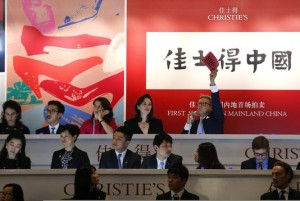 We welcome submissions that analyse changes in the significance of pop or modern art to collectors located in Asia. The contributions will be collated in a special issue of the peer-reviewed journal Situations : Cultural Studies in the Asian Context, due in Fall 2015.
We welcome submissions that analyse changes in the significance of pop or modern art to collectors located in Asia. The contributions will be collated in a special issue of the peer-reviewed journal Situations : Cultural Studies in the Asian Context, due in Fall 2015.
In explaining the huge international success of Pokémon, Anne Allison argued that apart from the cuteness of its characters, the attraction lay in the game’s inherent social capital, and the “cash value” of its trading cards (Allison 2006, 197, 217). There was possibly a fourth factor, namely the cultural capital generated by association with the product’s country of origin (Iwabuchi 2004, 57). Indeed, the cards accorded qualities to their young collectors that held currency both within and beyond the game’s realm. Since the game’s hype began to fade in the early 2000s, a new character-based phenomenon has emerged, one that both relies on and nurtures young people’s interest in collecting. Referred to as designer or vinyl toys, they may resemble Pokémon characters, but are crucially different. Unassociated with any particular game or fictional universe, these characters are created as stand-alone artefacts, commonly sold in limited numbers. Their shapes and sizes are relatively free, but artists are often commissioned to work on existing canvasses such as those of Be@rbrick, Qee and To-Fu. Variations of these toys can be found across East Asia, where they are popular mostly with younger collectors. Although the patterns of consumption differ, they continue to be affected by representations of social, economic and cultural capital. The same can be said for collections of pop or modern art more broadly; they ultimately serve to positively distinguish their holders. As Baudrillard put it succinctly, “it is invariably oneself that one collects” (Baudrillard 1997, 21).
For this special 2015 summer issue of Situations, we seek to collate a total of five studies of new developments in the collection of pop or modern art in Asia. Taking into account the considerable social and generational differences in consumption patterns across the region, we welcome submissions that analyse changes in the significance — social, economic, cultural or otherwise — of pop or modern art to collectors located in Asia.
Questions one might consider include :
- Are notions of pop or modern art changing, or are the values associated with their collection changing, or both ?
- What criteria affect the collectability of pop or modern art, and what is the origin of those criteria ?
- Why do collectors from specific social groups favor a particular type of art?
- What is the importance of visibility, or investment ?
- How are social networking systems used by sellers, artists, and/or buyers ?
The summer issue of Situations will appear in fall 2015 ; a maximum of five articles can be included. Please e-mail abstracts (300 words maximum) to the guest editor (Roald Maliangkay) by March 15, 2014. The selection process will take no more than two weeks.
NB : the deadline for the 6,000 ~7,000-word articles is 15 July 2015.
More info on the journal can be found here: https://sites.google.com/site/situationsyonseienglish/
Should you have any questions or require more information, please do not hesitate to contact the guest editor: https://researchers.anu.edu.au/researchers/maliangkaij-rhh
– Anne Allison, Millenial Monsters: Japanese Toys and the Global Imagination (Berkeley: University of California Press, 2006).
– Koichi Iwabuchi, “How ‘Japanese’ is Pokémon?” In Pikachu’s Global Adventure: The Rise and Fall of Pokémon, ed. by Joseph Jay Tobin (Durham: Duke University Press, 2004).
– Jean Baudrillard, “The System of Collecting.” In The Cultures of Collecting, ed. by John Elsner and Roger Cardinal (London, Reaktion Books, 1997).
College of Asia & the Pacific
Baldessin Precinct Building #110, Room E4.37
The Australian National University
Acton, Canberra ACT 2601,
AUSTRALIA

Leave a Reply
You must be logged in to post a comment.